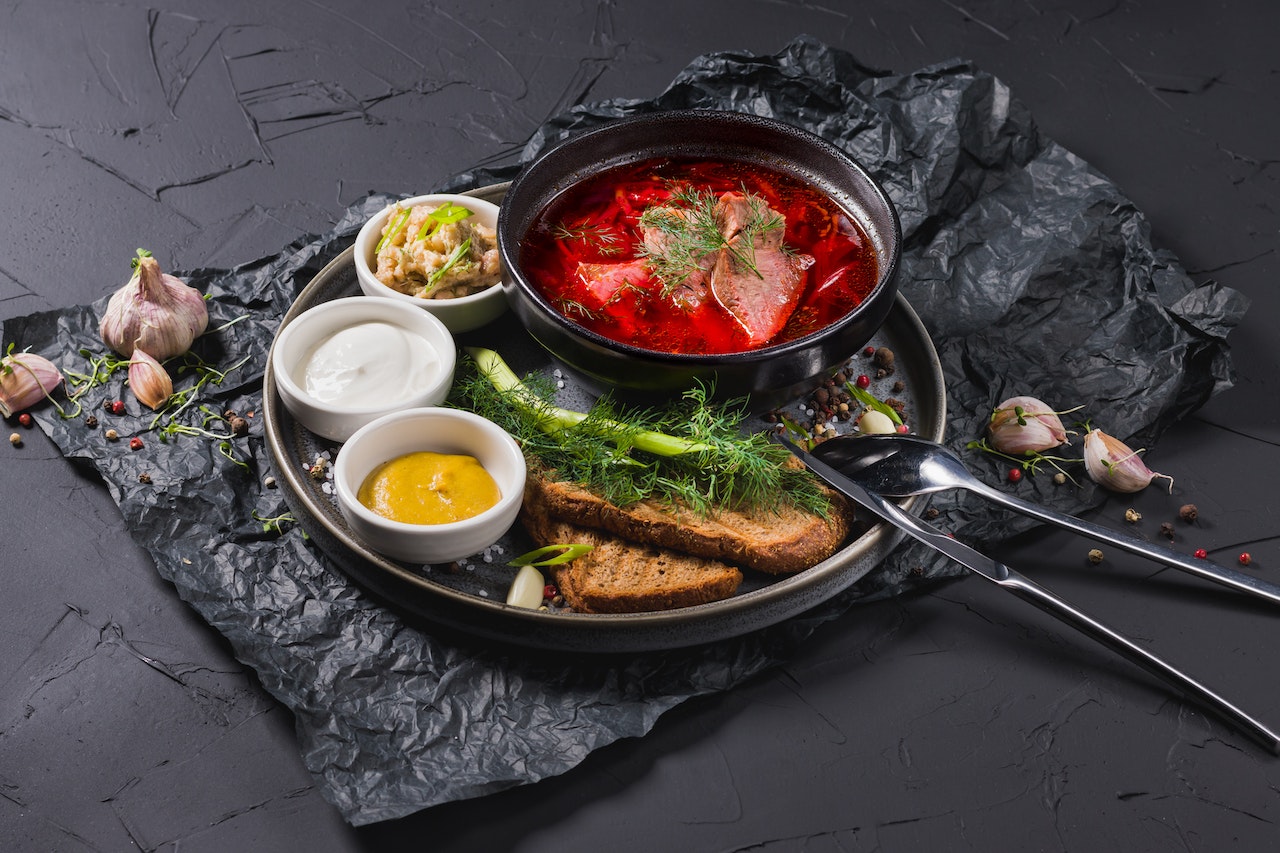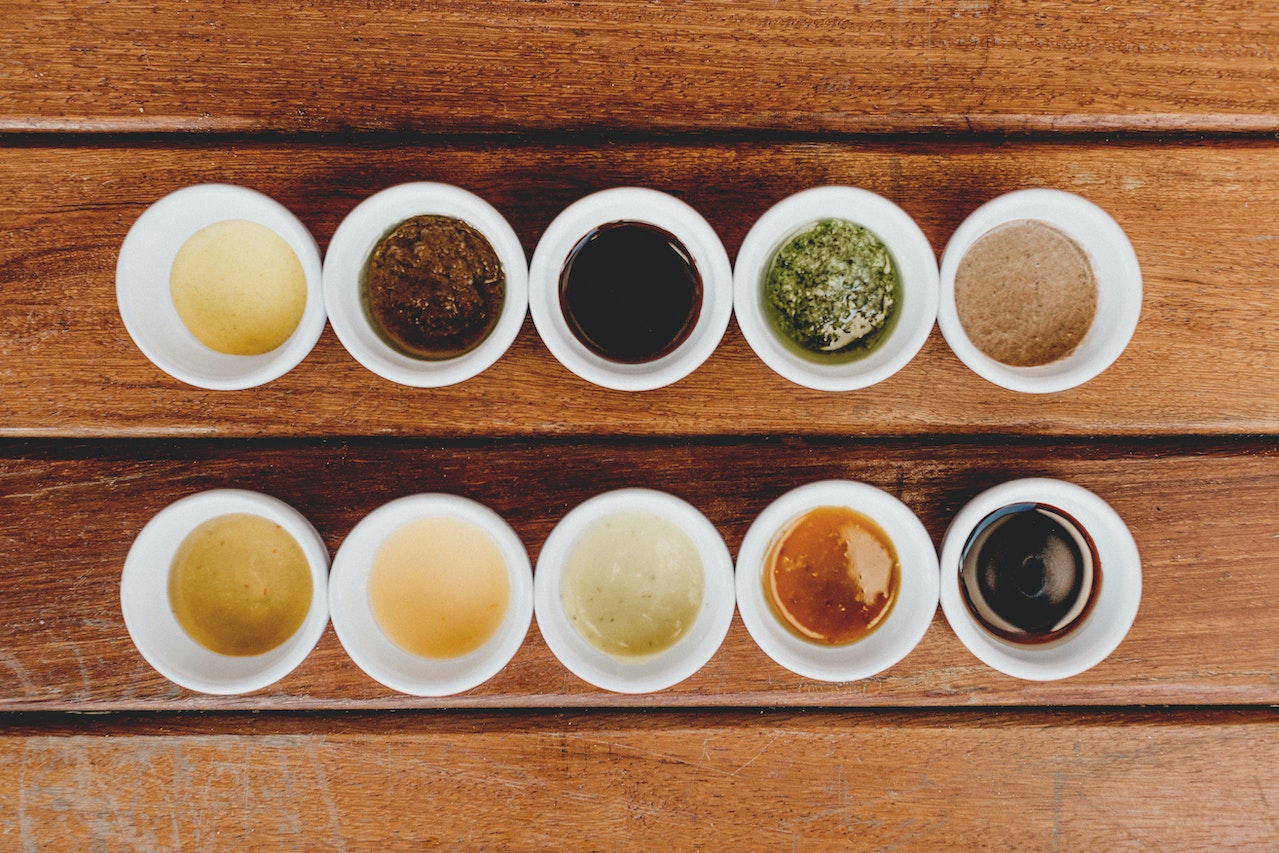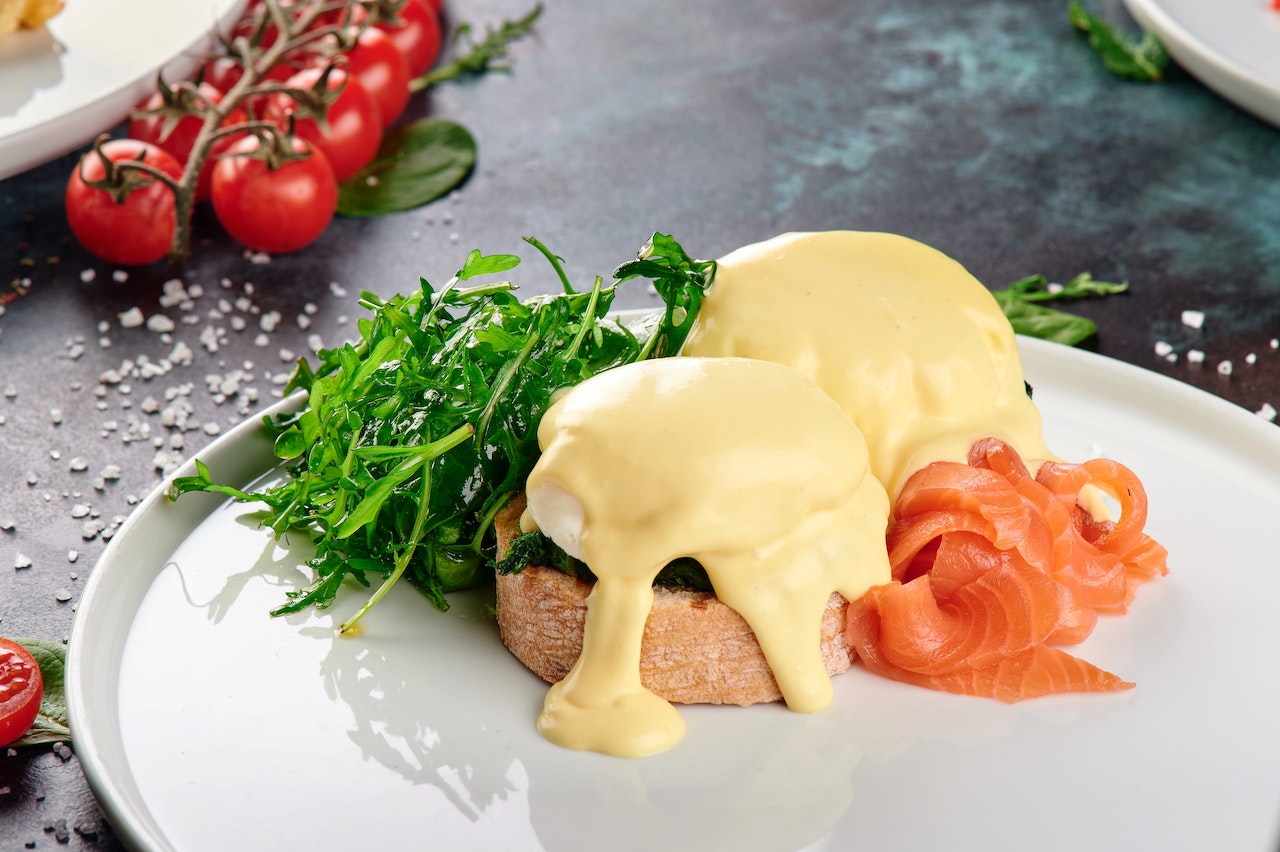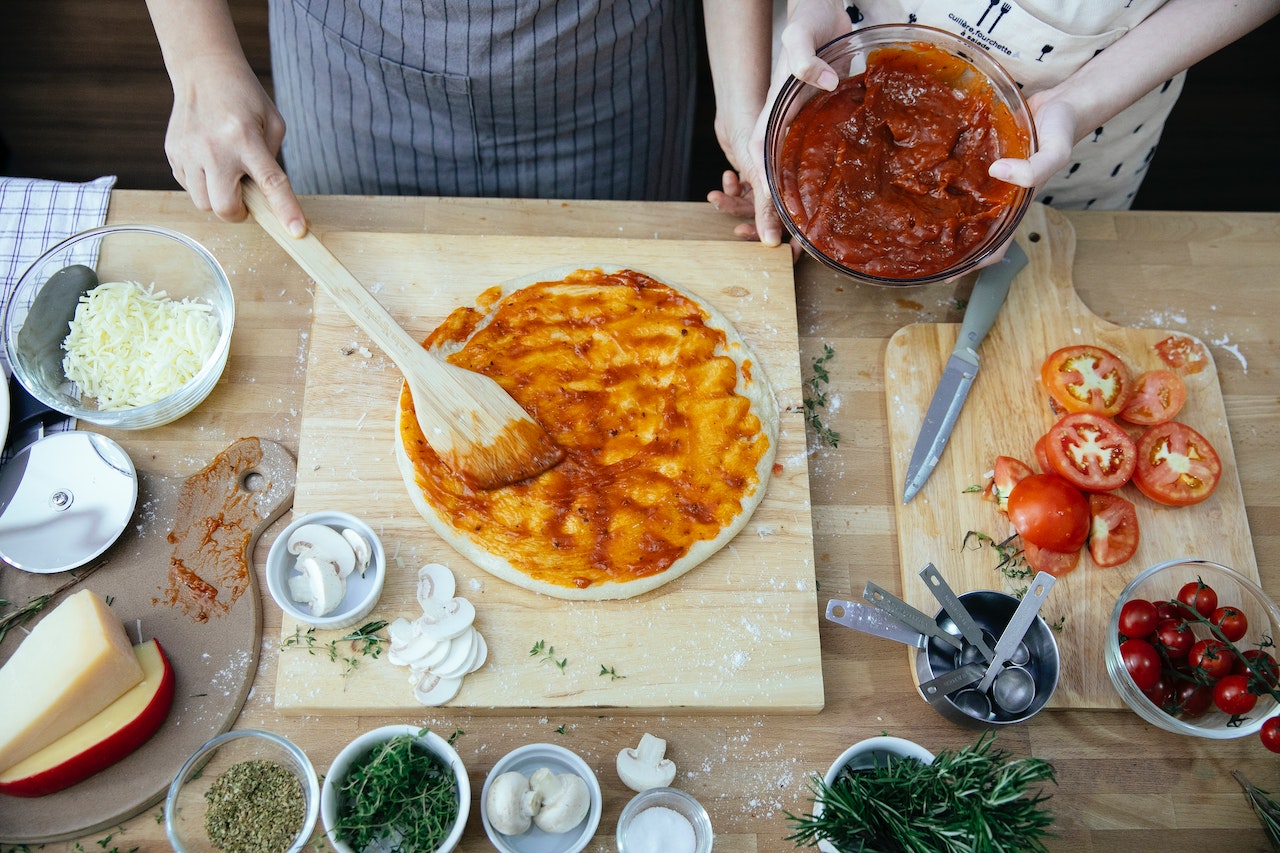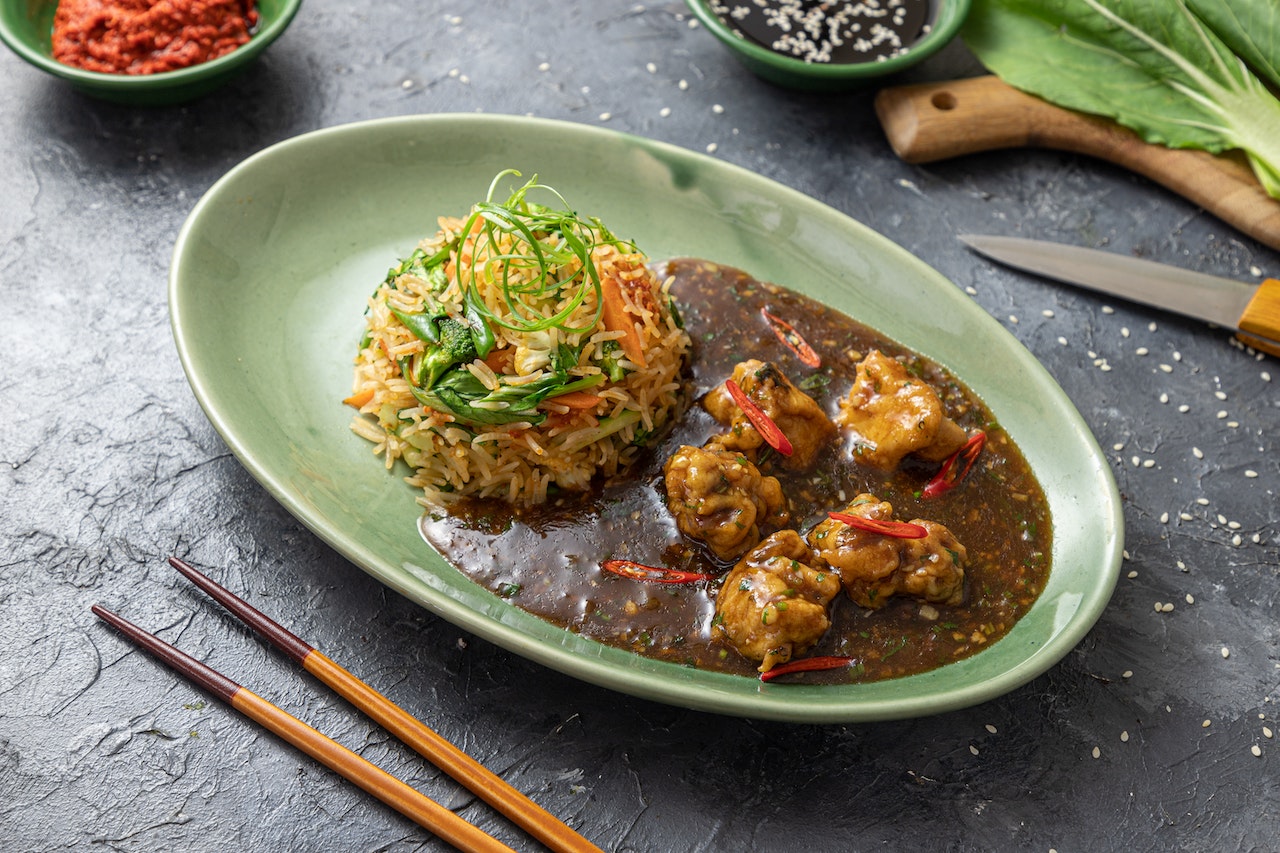In cookery, sauces, and gravies are essential combinations in enhancing the flavors, textures, and appearances of dishes. Both can add flavor and moisture. They may look similar at first, but there are differences between the two. The sauce is often used as a topping or accompaniment for meats, vegetables, or pasta while gravy is served alongside roasted or grilled meats.
The chef’s utmost achievement is sauces and gravies that capture the tastebuds of sauce and gravy lovers. There are a lot of sauce and gravy variations that can be created once the basic is mastered. It may take a while to master the taste, but it is worth the try.
Sauces
Sauce is a French word taken from the Latin salsa, meaning salted. The oldest recorded European sauce is garum, the fish sauce used by the Ancient Romans. The sauce is made to relish and complement foods and make them more interesting to dine. In the culinary kitchen, sauces are used in a variety of ways, including toppings for meat, vegetables, and pasta or as a base for soups and stews. Sauces add contrasting or complimentary flavors and colors to the dish and appealing throughout the dining experience.
Mother Sauce
A mother sauce is a base sauce that forms the foundation for numerous derivative sauces. It is a sauce that enhances a mother sauce with new ingredients and flavors. Chefs may also use the terms daughter sauces, little sauces, or subsidiary sauces to describe derivative sauces. There are five basic mother sauces from which we can create all other sauces. Mother sauce has a different liquid, different thickener, and different flavors. A roux is used as a thickening agent in three of the five mother sauces.
Hollandaise Sauce
Hollandaise sauce means Dutch sauce in French. It is a mixture of egg yolk, melted butter, and lemon juice, a white wine or a vinegar reduction. It is usually seasoned with salt either white pepper or cayenne pepper. It is well known as a key ingredient of eggs benedict and is often served on vegetables such as steamed asparagus. This classic creamy sauce is perfect for breakfast or brunch.
To make hollandaise sauce, beaten egg yolks are combined with butter, lemon juice, salt, and water heated gently while being mixed. Some cooks use a double boiler to control the temperature. Some recipes add melted butter to warmed yolks; others call for unmelted butter and yolk to be heated together; still, others combine warm butter and eggs in a blender or food processor. Temperature control is critical as excessive temperature can curdle the sauce. Some chefs start with a reduction. The reduction consists of vinegar, water, and cracked peppercorns. These ingredients are reduced to “au sec” or almost dry, strained, and added to the egg yolk mixture.
Hollandaise can be frozen.
Pan Sauce
Pan Sauce a la minute is cooked to order and served immediately. Pan sauces as the name suggests, are made in the same pan you have used to saute shrimp, sear a steak, or brown some onions. Follow these steps in making a pan sauce.
- Sauté aromatics such as onion, garlic, shallot, chives, or leeks in the grease remaining in or added to your frying pan.
- Deglaze the pan using wine or vinegar.
- Add stock to the pan using flavoring agents such as herbs, dried fruits, or spices other than salt. Minimize the mixture until the sauce reaches the nappe stage enough to coat the back of a spoon.
- Add butter to the pan and swirl to melt to give the sauce a sheen and velvety texture. Strain your sauce and butter.
- Ready to serve.
Tomato Sauce
Tomato sauce, or sauce tomato in French, is a tomato-based sauce that serves as one of the five mother sauces. Tomatoes have a high water content and tender flesh that cooks into thick sauces without emulsification. Tomato sauce is popular in Italian cuisine, which uses an array of secondary tomato sauces for pasta and pizza.
To make tomato sauce, follow these steps:
- Render 2-3 oz. of salt pork by placing it in a heavy-bottom saucepan with one tablespoon of water, covering it, and cooking it over medium heat to create steam for about 5 minutes.
- Peel and medium-dice 3 oz. of carrot and 3 oz. of white or yellow onion.
- When the salt pork is rendered, add the diced carrot, onion, and 2 oz. of butter to the saucepan.
- Cook over medium heat until the ingredients are tender and aromatic.
- Use this time to quarter 5 lb. of high-quality tomatoes.
- Create a brown roux by mixing 2-3 oz. of all-purpose flour into a saucepan and cooking the mixture until it achieves a brown shade.
- Incorporate the quartered tomatoes. Simmer them until they soften and burst.
- Add 1 clove of freshly crushed garlic and 1 qt. of white veal stock. Bring to a boil.
- Season to taste with salt and pepper. Add 1 bay leaf and 1 sprig of thyme.
- Escoffier’s recipe calls for a pinch of sugar to balance the acidity of the tomatoes. Keep the sugar portion to a minimum to avoid over-sweetening the sauce.
- Cover the saucepan and leave it to simmer for 90 minutes.
- Once it’s cooled enough to handle, strain the sauce through a chinois.
- The traditional sauce tomato is ready to serve. Extra sauce will freeze and defrost well when stored in an airtight container.
- To achieve a smoother sauce, blend the sauce tomato before passing it through the chinois.
Bechamel Sauce
Bechamel is the original cream sauce served as the foundation for every cheese sauce you know and love. Bechamel is a combination of milk and white roux. French, Greek, and Italian bechamel recipes incorporate salt and nutmeg into their sauces. Bechamel was originally an Italian sauce, Balsamella, that became a hit in the French royal court of King Louis XIV where it was renamed ‘bechamel’ after his chief steward.
Learn how to make bechamel sauce by following this simple recipe.
- In a large saucepan, melt five tablespoons of butter over medium heat.
- Mix 1/4 cup of flour into your melted butter until smooth.
- Cook the sauce until it turns a light sand color (approximately seven minutes). Stir constantly.
- Turn your heat to medium-high and whisk in a qt. of milk. Continue whisking the milk into the roux until it thickens.
- Lower your heat to medium-low and allow your sauce to simmer. You want the flour to soften and lose its gritty taste (approximately 10 to 20 minutes).
- Season your sauce with 2 tsp. of salt and 1/4 tsp. of nutmeg before serving/storing it.
Espagnole Sauce
Espagnole is a brown sauce thickened with a roux composed of brown stock, mirepoix, and tomatoes. Espagnole is the most complex mother sauce. It has a potent flavor that easily overpowers, so you will rarely directly apply it to your meals. Espagnole sauce is prevalent in its reduced, derivative forms.
Easily create the most complex mother sauce with our Espagnole recipe.
- Coarsely chop one small carrot, celery rib, and medium onion.
- Cook the chopped vegetables and 1/2 stick of butter over moderate heat until golden in a saucepan. Stir occasionally.
- Create a roux by reducing the temperature to low heat and stirring in 1/4 cup of all-purpose flour. Cook to medium brown.
- Pour 4 cups of hot brown stock into the saucepan. Whisk as you pour.
- Mix in 1/4 cup tomato puree, two cloves of coarsely chopped garlic, 1/2 tsp. whole black peppercorn, and 1/2 a California bay leaf.
- Continue stirring the sauce until it comes to a boil. Lower the heat to a light simmer.
- Leave the sauce to simmer uncovered until it reduces to approximately 3 cups for 45 minutes. Stir periodically.
- Once reduced, strain the Espagnole sauce through a cheesecloth before using it as a topping or a base for another sauce.
Veloute Sauce
The veloute sauce is a versatile white sauce. There are three types of veloute (chicken, fish, and veal) depending on the variety of white stock used. The most common variety is chicken veloute. The veloute sauce is the base in chicken dishes, creamy soups, and other comfort food staples.
Learn how to make the most versatile white mother sauce with our easy-to-follow veloute recipe.
- Melt 3 tbsp. of unsalted butter in a saucepan over medium-low heat.
- Whisk 3 tbsp. flour into the butter until the mixture is smooth.
- Cook the roux until it turns blond.
- Incorporate 2 cups of white stock (chicken is the most common choice) into your roux in small increments. Whisk regularly the mixture and bring it to a gentle boil.
- Season to taste with salt and white pepper and serve.
- The veloute sauce thickens as it cools. If you are not using it immediately, thin the sauce by adding more hot stock before serving.
Soy Sauce
Soy Sauce is also called soya sauce. It is a liquid condiment of Chinese origin, traditionally made from a fermented paste of soybeans, roasted grain, brine, and Aspergillus oryzae. Soy sauce is an originally Chinese sauce in Asia for many centuries. It is now a must-have item for every kitchen around the world. From marinating meat to serving as a dipping sauce for sushi, soy sauce is available in all cuisines. To make soy sauce, follow these steps.
- 16 ounces organic high-quality soybeans
- 24 tablespoons or 12 ounces all-purpose flour
- 16 tablespoons salt
- 1 gallon fresh water
- If the soybeans are uncooked, pour 3 cups of fresh water into a pot, add beans, and bring to a boil. Once the water boils, reduce the heat to simmer. Cook for 1-1 ½ hours or until tender and partially removed from their pods.
- When cooked, add the soybeans to a food processor and blend to a paste. Pour pureed beans into a bowl and combine with flour.
- Place the bean flour mixture on a clean surface and shape it into a log. Cut the log into slices about ¼-inch in thickness.
- Arrange the soybean slices on a moist paper towel and cover with another wet paper towel. Cover in cling wrap and put it away in a discreet part of your kitchen or home. Allow to sit for seven days or until the discs are in mold.
- Unwrap the discs and arrange them on a baking sheet so they do not touch. Leave them to dry in direct sunlight. Soybean discs should turn brown when dry.
- When the soybean slices have completely dissolved, strain the mixture with cheesecloth into bottles for storage. Soy sauce is ready to flavor meats, seafood, veggies, and soups.
- Serving suggestion: 5g
Gravies
Similar to sauces, gravies are from cooked meats such as beef, chicken, or turkey as a foundation. The drippings are mixed with a thickener like flour and seasonings to make a savory flavor. In addition to being frequently served with roasted or grilled meats, gravies can also serve as the foundation for stews, casseroles, bread, and biscuits.
Some common types of gravies include:
Turkey Gravy
Turkey Gravy is stock thickened with a bit of flour and butter, and then add a touch of umami-rich ingredients like soy sauce and marmite. This is how to do it:
- ¼ cup unsalted butter
- ¼ cup all-purpose flour
- 2 teaspoons chopped fresh thyme
- 1 tablespoon chopped fresh parsley leaves
- Kosher salt and freshly ground black pepper, to taste
- Strain pan drippings through a fine-mesh sieve; discard solids and reserve 2 1/2 cups pan drippings; set aside.
- Melt butter in a medium saucepan over medium heat. Whisk flour and thyme until lightly browned, about 1 minute.
- Gradually whisk in reserved pan drippings. Boil it; reduce heat and simmer, whisking constantly until thickened for 5-10 minutes. Stir parsley; season with salt and pepper to taste.
- Serve warm.
Beef Gravy
Traditional beef gravy is the best accompaniment to roast beef and Yorkshire pudding, the national dish of Great Britain.
- 1 cup roast meat pan juice such as beef or lamb
- 1/3 cup red wine or port
- 2 cups beef, chicken, or vegetable stock
- 1 tablespoon cold unsalted butter, cut into small cubes
- Gather the ingredients.
- Place the roasting pan with the pan juices on the stovetop over high heat until the meat juices begin to bubble, taking care not to burn the juice as it bubbles up quickly.
- Pour in the red wine and scrape all the bits from the bottom of the pan with a wooden spoon or spatula.
- Allow this mixture to bubble until reduced to a sticky, concentrated glaze.
- Add the stock to the sauce and stir thoroughly to incorporate into the reduced glaze.
- Once it is mixed, strain the gravy through a fine sieve into a saucepan. Bring this mixture to a gentle boil over medium-high heat and reduce it by one-third.
- Once the gravy is reduced, add the butter in tiny pieces, shaking the pan gently until all the butter is melted and fully incorporated into the sauce.
- Check the resting meat to see if it has given up more meat juices. Add these juices to the gravy and give it another quick boil.
- Keep the gravy warm until needed, then strain it into a gravy boat or bowl and serve.
Mushroom Gravy
A vegetarian gravy made with mushrooms and vegetable broth, commonly used as a topping for mashed potatoes or roasted vegetables.
Whether served over steaks, meatloaf, or roast chicken, this versatile mushroom gravy recipe is a winner and much better tasting than any jarred or packaged sauce mix.
- 1/4 cup (4 tablespoons) unsalted butter
- 1 pound white button mushrooms or cremini mushrooms, cleaned and sliced
- 1/3 cup all-purpose flour
- 4 cups beef broth or chicken or vegetable broth, chilled
- 1/2 teaspoon dried thyme
- Salt to taste
- Freshly ground black pepper, to taste
- Gather the ingredients.
- Melt the butter in a large saucepan over medium-high heat.
- When the butter starts to sizzle, add the mushrooms and cook, stirring for 10 minutes or until the mushroom juices have evaporated and begin to brown.
- Stir in the flour, reduce the heat to medium, and cook for another 5 minutes.
- Whisk in 1 cup of the cold broth.
- Once incorporated, pour in the rest of the broth and add the thyme.
- Bring back to a simmer, reduce the heat to low, and simmer gently for 30 minutes, stirring occasionally.
- Season with salt and fresh ground black pepper to taste.
In conclusion, gravies and sauces differ significantly. Gravies are prepared with cooked meat drippings and are thicker and more viscous while sauces are typically made with a liquid base and are more pourable. Having the best sauce or gravy for your dish may give you a delightful meal full of flavor.

